Mushroom Basics
 Mushrooms are known to be both beautiful and mysterious! Some are tasty, some even medicinal but many can have some serous negative health effects even to the point of death. The common phrase of "any mushroom can be eaten, but some just once (death)" shows that mushrooms should be respected and caution should be used when gathering. It is recommended to consult an expert mycologist when foraging to maintain proper identification. Many edible mushrooms have similar physical characteristics of toxic mushrooms. Ironically, some of the most harmful mushrooms are the most beautiful.
Mushrooms are known to be both beautiful and mysterious! Some are tasty, some even medicinal but many can have some serous negative health effects even to the point of death. The common phrase of "any mushroom can be eaten, but some just once (death)" shows that mushrooms should be respected and caution should be used when gathering. It is recommended to consult an expert mycologist when foraging to maintain proper identification. Many edible mushrooms have similar physical characteristics of toxic mushrooms. Ironically, some of the most harmful mushrooms are the most beautiful.
So what are mushrooms exactly? Mushrooms are a diverse group of fungi that belong to the kingdom Fungi. They come in various shapes, sizes, and colors and can be found all over the world. Here is some general information about mushrooms:
-
Fungal Kingdom: Mushrooms are fungi so they belong to the fungal kingdom, a separate biological classification. They are not plants or animals though some suggest that they have more in common with humans than plants. They are sensitive to many of the same organisms that we are.
-
Basic Structure: The visible part of a mushroom is called the fruiting body, and it's the part we typically eat. The fruiting body is made up of a stem (stipe) and a cap (pileus). Underneath the cap, you'll find gills or pores, which house the mushroom's spores. Beneath the ground lies the hidden, vegetative part of the mushroom called the mycelium. It consists of a network of fine threads (hyphae) that grow within the substrate. Mycelium is responsible for absorbing nutrients from its surroundings and plays a vital role in the mushroom's growth and ecology.
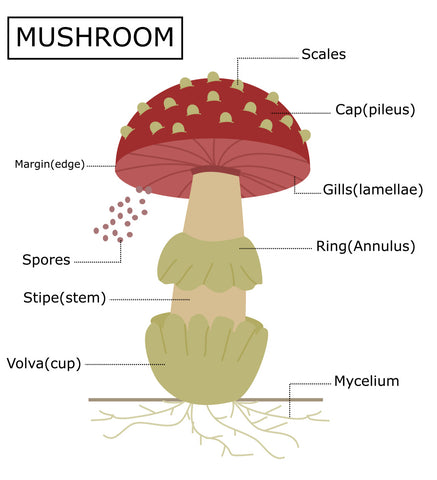
-
Reproduction: Mushrooms reproduce by releasing spores. These microscopic reproductive cells are dispersed into the environment, where they can grow into new fungal colonies if conditions are favorable.
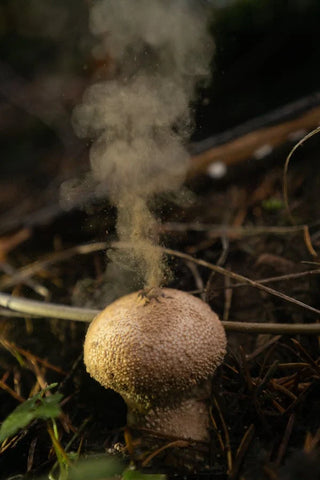
-
Nutrition: Mushrooms are low in calories and are a good source of essential nutrients like protein, fiber, vitamins (especially B vitamins), and minerals. They are also known for their unique nutritional profile, containing compounds like ergosterol (a precursor to vitamin D) and antioxidants. To reap the benefits of vitamin D, store bought mushrooms and mushrooms acquired in more shaded areas should be placed in a well lit window for a few hours prior to preparing so the ergosterol is converted to vitamin D.
-
Culinary Uses: Many mushroom species are edible and are used in various cuisines around the world. Some popular edible mushrooms include white button mushrooms, portobello, shiitake, and oyster mushrooms. Wild mushrooms are also foraged and used in dishes, but caution is necessary, as some wild mushrooms can be toxic. All mushrooms should be cooked prior to eating due to possible pathogens on the mushrooms as well as the cell walls needing to be broken down, so it can be digested.
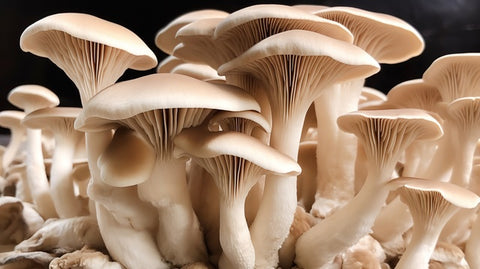
-
Medicinal Uses: Certain mushrooms, like reishi, shiitake, turkey tail, lion's mane and chaga, have been used in traditional medicine for their potential health benefits. They are believed to have immune-boosting and anti-inflammatory properties.
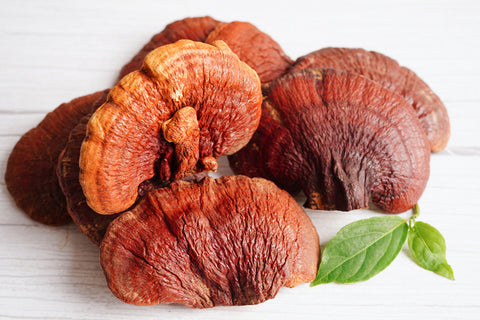
-
Toxicity: While many mushrooms are safe to eat, there are numerous toxic mushroom species that can cause serious illness or even death if consumed. It's crucial to be knowledgeable about mushroom identification or buy mushrooms from reputable sources when foraging or cooking with wild mushrooms.
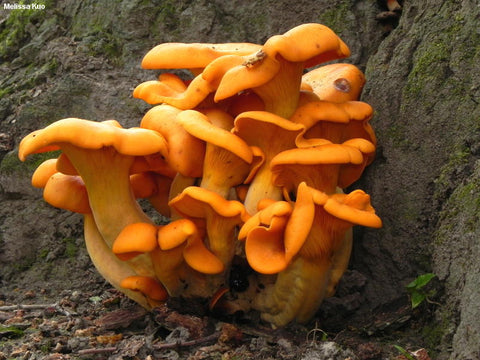
-
Cultural Significance: Mushrooms have been a part of human culture for centuries. They have been used in art, folklore, and even religious ceremonies. In some cultures, mushrooms are associated with superstitions and myths.
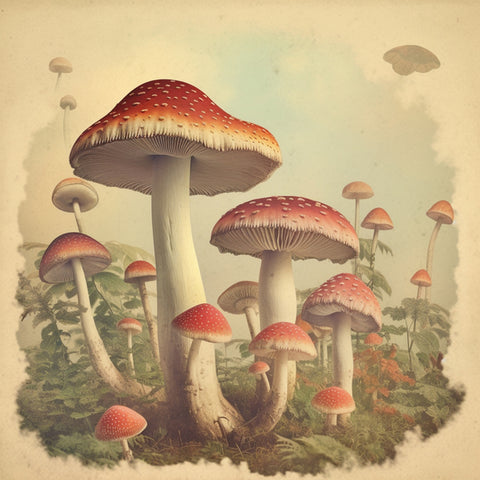
-
Ecological Role: In nature, mushrooms play a vit al role in decomposition. They break down dead organic matter, recycling nutrients and contributing to the health of ecosystems. Mycorrhizal mushrooms also form beneficial symbiotic relationships with plants, aiding in nutrient uptake.
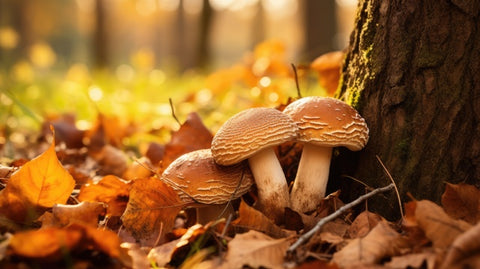
-
Psychedelic Mushrooms: Some mushroom species, like Psilocybe cubensis, contain psychoactive compounds like psilocybin and psilocin, which can induce hallucinogenic experiences when consumed. These are often referred to as "magic mushrooms" and are illegal in many countries.
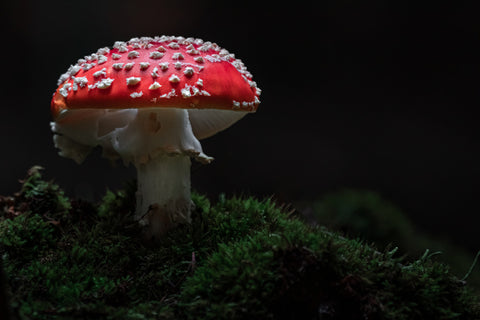
Remember that when dealing with mushrooms, especially for culinary or medicinal purposes, it's essential to have proper identification and knowledge. If you are uncertain about a particular mushroom, it's best to consult an expert mycologist or a field guide to avoid any potential risks.
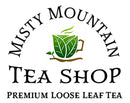


Leave a comment